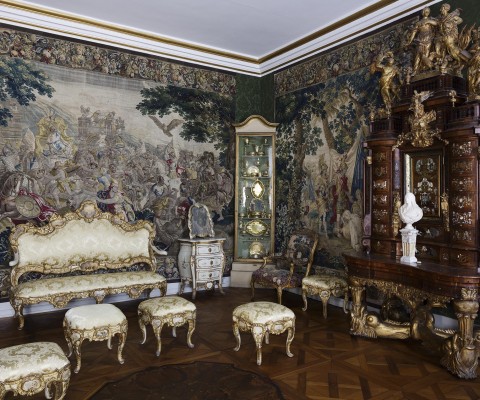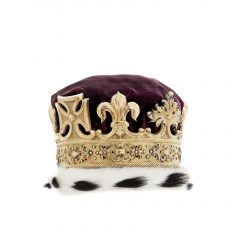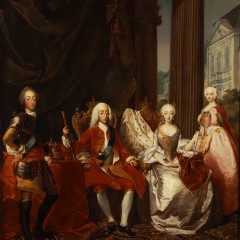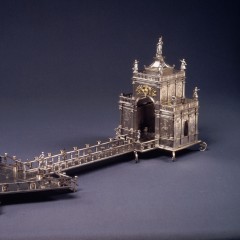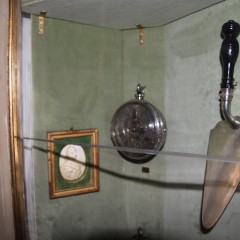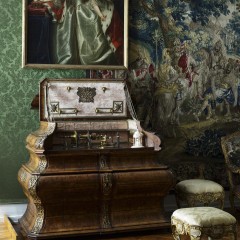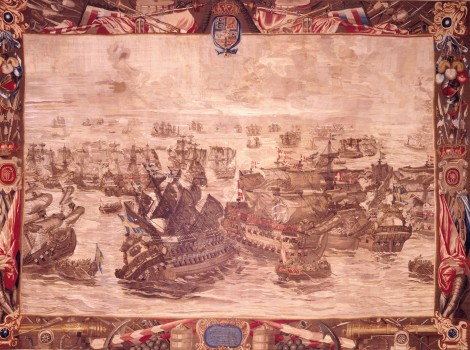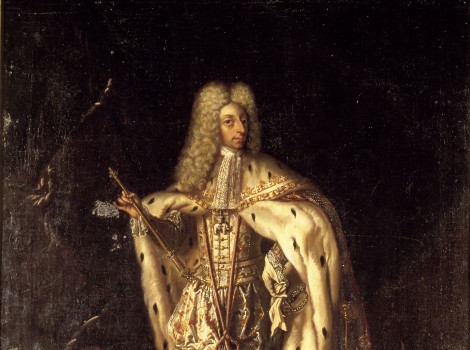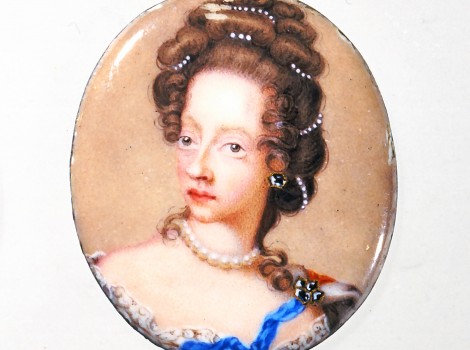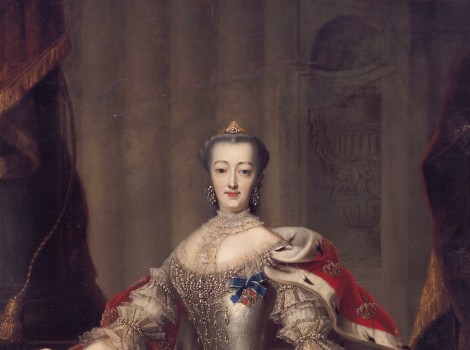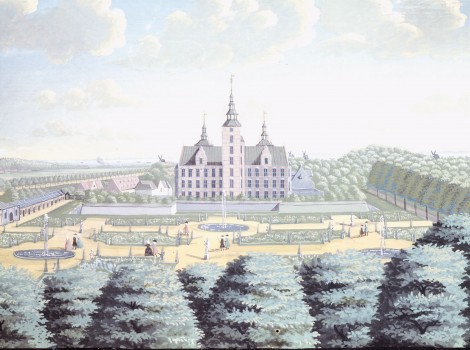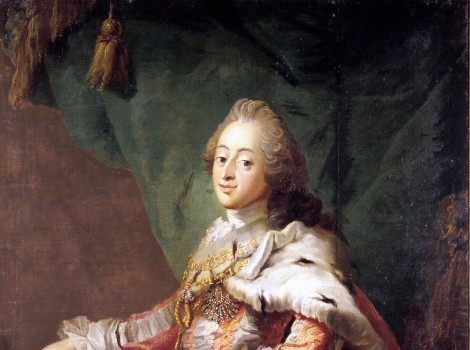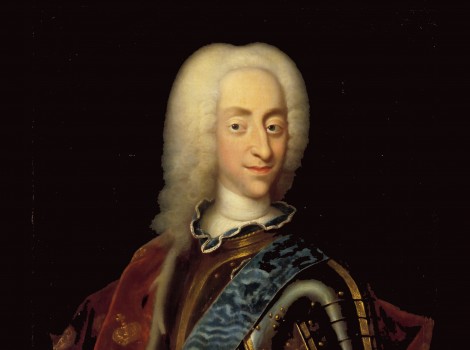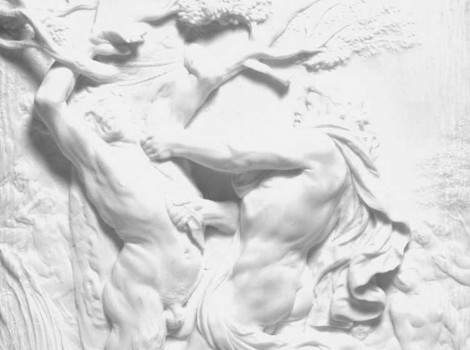12 Christian VI’s Room
ROOM 12: This room was originally the bedchamber of Frederik IV’s sister, Sophie Hedevig. The walls are now decorated with tapestries depicting scenes from the life of Alexander the Great. They were brought as samples by the tapestry weaver, Bernt van der Eichen. He was summoned from Flanders in 1684 before receiving a commision for the tapestries illustrating the war feats of Christian V, which were hung in the Knights’ Hall.
The parquet floor in Christian VI’s room originates from Frederiksberg Palace; it was moved to Rosenborg around 1870. The ceiling painting, Flora, Distributing Blessing over Denmark, was painted by Benoît le Coffre. That was also moved from Frederiksberg Palace.
The exhibits in this room have a connection to Christian VI, and so they mainly date from the first part of the 18th century.

 Dansk
Dansk
 English
English
 Deutsch
Deutsch



